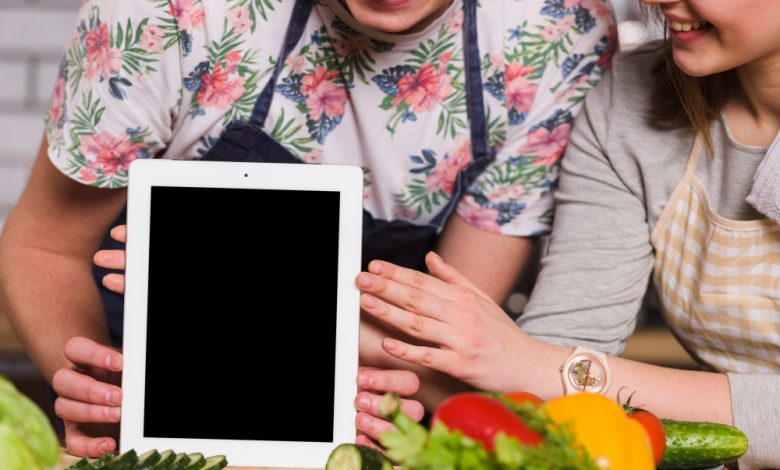How to Build Your Personal Brand in the Food Industry Online

The food industry is highly competitive, and building a personal brand can help you stand out, attract clients, and establish yourself as an authority in your niche. Whether you’re a chef, food blogger, recipe developer, or culinary consultant, your personal brand conveys who you are, what you stand for, and what makes you unique. Creating an impactful online presence is essential for reaching a wider audience, gaining credibility, and unlocking new opportunities. Here’s how to build a successful personal brand in the food industry online.
1. Define Your Unique Selling Point (USP)
Before you start building your brand, you need to know what sets you apart. Your unique selling point (USP) is what makes your approach to food distinctive, and it helps potential followers or clients understand why they should follow you.
Questions to Define Your USP:
- What are your core values and passions in food? Perhaps you’re passionate about sustainable cooking, plant-based recipes, or international cuisines.
- What skills and expertise do you bring? Identify your strengths, like culinary skills, food photography, or knowledge of nutrition.
- Who is your target audience? Think about who you want to reach. This could be home cooks, food enthusiasts, people looking for healthy eating tips, or those interested in gourmet cuisine.
Once you’ve defined your USP, make it a central part of your brand. For example, if you focus on healthy meal-prep recipes, your content, visuals, and messaging should all reflect this angle consistently.
2. Create a Strong Visual Identity
A consistent and attractive visual identity is crucial for building a memorable brand. In the food industry, visuals play a significant role, as people “eat with their eyes” first.
Tips for Developing a Visual Identity:
- Choose a Color Scheme and Font Style: Select colors and fonts that reflect your brand personality. For example, earthy tones work well for organic and sustainable brands, while vibrant colors might suit a brand focused on exotic or fusion cuisines.
- Create a Logo: A logo adds a professional touch to your brand and can be used across your social media profiles, website, and marketing materials.
- Develop a Consistent Style: Define your photography or video style. You might prefer bright, clean shots, rustic styles, or even minimalistic visuals. Ensure your style stays consistent across all platforms for easy recognition.
A strong visual identity helps you stand out and makes it easier for your audience to remember and recognize your content.
3. Build a Content Strategy
A well-planned content strategy is essential for building and sustaining your online presence. By regularly sharing valuable and engaging content, you’ll gradually attract followers who are interested in what you offer.
Steps to Develop Your Content Strategy:
- Choose Core Content Topics: Decide on the key themes or topics you want to focus on, such as recipes, food reviews, cooking tips, or nutritional advice.
- Set a Posting Schedule: Consistency is key, so decide how frequently you’ll post. If you’re just starting out, try posting a few times a week and increase as you become comfortable.
- Use a Mix of Content Types: Engage your audience by mixing content formats, including photos, videos, live sessions, and stories. Each format allows you to connect with your audience in a different way.
Develop a content calendar to stay organized and plan topics in advance. This will help you maintain a steady flow of content and ensure your messaging is aligned with your brand.
4. Leverage Social Media Platforms
Social media is one of the most effective tools for building your personal brand online. Choose the platforms that align best with your audience and the type of content you’re creating.
Popular Social Media Platforms for Food Professionals:
- Instagram: Perfect for sharing visually appealing food photos, recipes, and stories. Use Instagram Reels and Stories to boost engagement and reach new followers.
- YouTube: Great for long-form video content, like cooking tutorials, kitchen hacks, or food vlogs. YouTube also has a strong search engine, helping users find your content over time.
- TikTok: Known for short, engaging videos, TikTok is ideal for quick recipes, cooking tips, or food challenges.
- Pinterest: Excellent for sharing recipe images, food photography, and blog posts. Pinterest can drive traffic to your website if you have one.
Each platform has its own strengths, so focus on the ones that resonate most with your audience and content style. Remember to engage with your followers by responding to comments, liking posts, and fostering community.
5. Create a Food Blog or Personal Website
A blog or personal website is an invaluable asset for building a personal brand, as it serves as your digital home base. Unlike social media, which can change or limit reach, a website gives you full control over your content and brand.
Benefits of Having a Food Blog or Website:
- Showcase Your Expertise: Use your blog to share detailed recipes, cooking techniques, or food industry insights. A well-maintained blog demonstrates your knowledge and expertise.
- Build SEO for Organic Reach: A website allows you to optimize content for search engines, which helps people discover your brand through organic search results.
- Drive Traffic to Social Media: Include links to your social media profiles, making it easy for visitors to follow you across platforms.
You can use platforms like WordPress, Squarespace, or Wix to create a professional website, or start a blog if you want to regularly publish written content.
6. Collaborate with Other Brands and Influencers
Networking is key to growing your brand, and collaborating with other food brands or influencers can expose your content to a wider audience.
Types of Collaborations:
- Partner with Food Brands: Work with brands on sponsored content, recipe development, or product reviews. Choose brands that align with your values and audience interests.
- Collaborate with Other Influencers: Cross-promote with influencers or food bloggers who have a similar audience. Consider doing joint Instagram Live sessions, video collaborations, or shoutouts.
- Guest Blogging: Contribute guest posts to food blogs, culinary magazines, or recipe websites. This establishes you as an authority and introduces you to a new audience.
Collaborations help you build credibility, expand your reach, and foster relationships with others in the food industry.
7. Engage with Your Audience
Building a personal brand isn’t just about creating content; it’s about building relationships. Engaging with your audience helps create a loyal following and establishes trust.
Audience Engagement Tips:
- Respond to Comments and Messages: Take the time to reply to comments and answer questions, showing that you value your audience’s feedback.
- Ask for Feedback: Use polls, questions, and surveys to gather opinions and make your audience feel involved.
- Host Q&A Sessions: Offer Q&A sessions on Instagram Live or Stories, where followers can ask you questions about cooking, recipes, or your experiences in the industry.
The more you engage, the more connected your followers will feel, which can turn casual viewers into loyal fans.
8. Monitor Your Progress and Refine Your Strategy
Building a personal brand is an ongoing process, so regularly monitor your progress and adjust your strategy based on what works best for your audience.
How to Track Your Progress:
- Analyze Social Media Insights: Look at metrics like engagement, reach, and follower growth to see which content performs best.
- Set Measurable Goals: Establish clear goals, like gaining a certain number of followers or increasing blog traffic, to keep your growth on track.
- Adapt to Trends and Audience Preferences: Stay updated on food trends and pay attention to the type of content your audience enjoys.
By evaluating your progress and adapting your approach, you’ll continue to grow your brand and stay relevant in the competitive food industry.
Conclusion
Building a personal brand in the food industry requires a mix of creativity, consistency, and engagement. By defining your unique selling point, creating quality content, engaging with your audience, and staying adaptable, you can establish a strong online presence and set yourself apart as a trusted authority in your niche. Whether you’re aiming to grow your social media following, attract clients, or become a recognized voice in the industry, these steps will help you create a memorable and impactful brand that resonates with your audience. Embrace your passion, keep refining your skills, and let your unique voice shine through every post.





